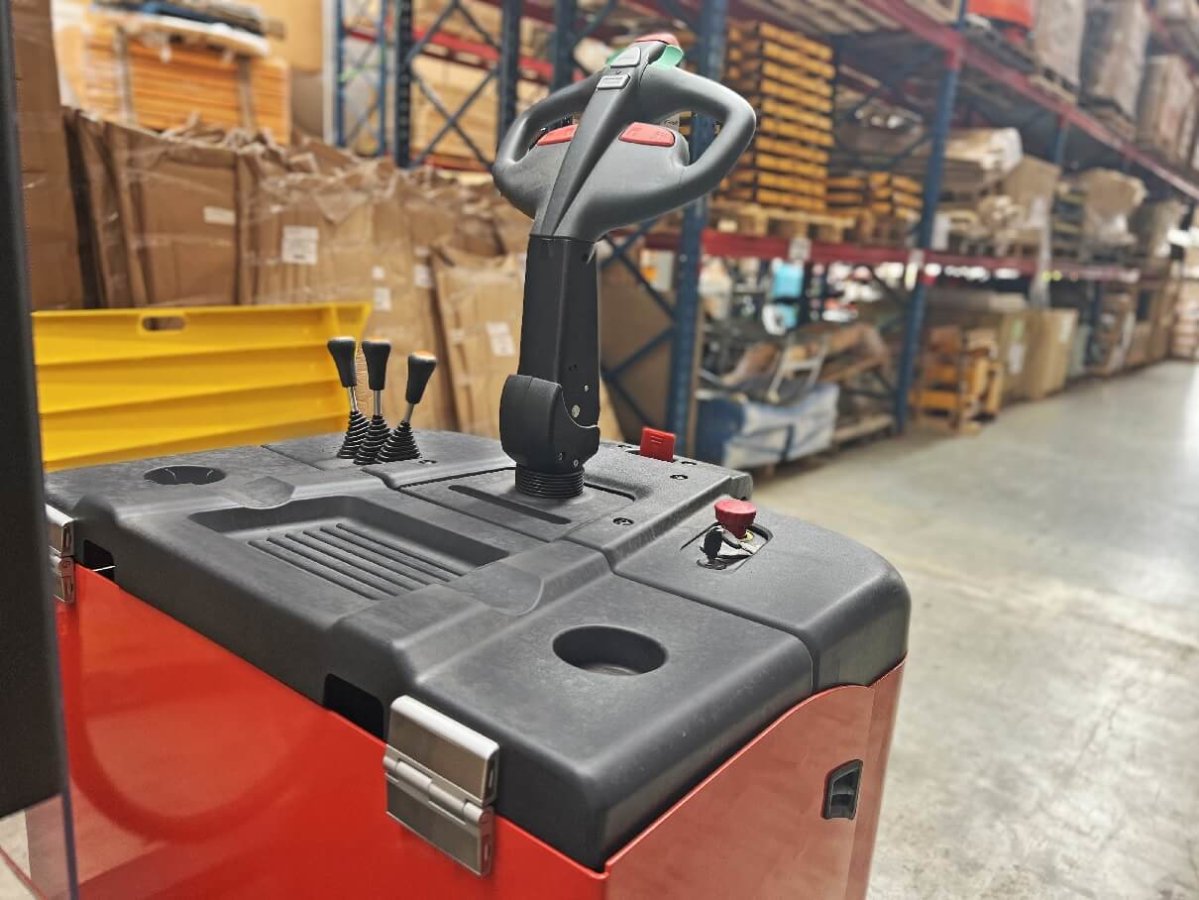When it comes to modern warehousing, the type of equipment you choose will significantly impact how quickly and safely your team gets through the day. Efficiency and safety are the name of the game, and the right equipment makes all the difference. Two of the most common material handling solutions across the warehousing landscape are pallet stackers and traditional forklifts.
While both are designed to move and stack goods, they each have unique features that suit different applications. Today, the team at Astrolift will review these two pieces of equipment to help you make your choice: pallet stacker or traditional forklift?
What is a Pallet Stacker?
Also known as a ‘walkie stacker’, a pallet stacker is a compact machine designed for ultimate versatility. These machines do all the hard work of manual labour for you, allowing you to lift and stack pallets in confined spaces in the most efficient way possible.
Like forklifts, these make shifting large volumes of heavy material safer for individual workers. Unlike forklifts, pallet stackers don’t need the operator to sit in a cabin. They’re operated by someone walking behind or alongside the equipment, making them ideal for small spaces and narrow aisles.
Let’s dive a little deeper into the unique benefits of this kind of solution.
Benefits of a Pallet Stacker
- Manoeuvrable: Small, powerful, and nimble, pallet stackers are the ultimate choice if you’re seeking manoeuvrability for small spaces and individual operators.
- Cost-effective: Pallet stackers are typically cheaper to maintain than forklifts. If you’re operating with some budgetary constraints, these are a fantastic option to keep you moving.
- Safe: Highly compact and with a built-in walk-behind operation, pallet stackers are safe to operate in high-volume warehousing situations.
- Versatile: Not all pallet stackers are built the same. Choose between nimble stackers for volume work and heavy-duty stackers for lifting large loads.
Stackers are ideal for warehousing situations with high shelving or a large quantity of medium loads to shift. They have a lower weight limit than traditional forklifts, which means they’re more suited to high volumes of lighter loads. There are a variety of stacker types, each designed to serve a slightly different purpose.
For example, electric pallet stackers are ideal for multi-shifting with sustainable values in mind. When selecting your stacker, it’s important to consider your needs. Consider the kind of weight the stackers would need to handle, your required lift height, and where in the warehouse you’re planning to use the stackers.
What is a Traditional Forklift?
Also known as counterbalance forklifts, traditional forklifts are extremely robust machines designed for heavy-duty lifting. These vehicles are equipped with a counterweight to balance what’s being lifted, with a variety of configurations to offer flexibility to your warehouse layout. Operators sit or stand in a built-in cage on the vehicle, allowing them to drive up and shift loads quickly and safely.
While pallet stackers tend to be more manoeuvrable and suited to high-volume work on medium loads, traditional forklifts are a good choice if you need to lift heavier pallets higher. Let’s review the benefits of this choice for a modern warehouse.
Benefits of a Traditional Forklift
- High lifting capacity: Forklifts are capable of lifting heavy loads to significant heights, making them suitable for handling large loads in warehouses with high stacking systems and tall aisles.
- Efficient: Able to load and unload palletised goods quickly; forklifts are a major contributor to operational efficiency.
- Versatile: With the right forklift attachments, these machines can accomplish a variety of tasks beyond simply lifting pallets. Think side shifters, fork positioners, and clamps that allow these machines to handle strangely-shaped items.
Despite these benefits, it’s important to remember that operating a forklift requires a specific operator license. This can present a barrier if your team isn’t forklift certified, which is when a pallet stacker might be a good option.
If you’re choosing between getting a traditional forklift or a pallet stacker, the right pick will depend on several factors. From the size of the warehouse to budget considerations, these two options offer unique benefits, and both have a place in modern warehousing. In fact, this doesn’t have to be a mutually exclusive decision. Having both a pallet stacker and a traditional forklift (with the right attachments, of course) in your warehouse will patch any and all gaps, creating greater efficiency.
No matter what, your first port of call should be to evaluate what you need from your materials handling solution. This will help you choose the most appropriate solution, thus saving time, stress, and money. If you’re unsure about where to begin, reach out to a team of experts to guide the way.
Contact us for New Zealand’s most comprehensive range of materials handling equipment.
Our products are carefully selected to provide you with high-quality, innovative solutions for modern warehousing. Astrolift is your one-stop shop for devices that improve safety, efficiency, and employee job satisfaction, from our range of high-quality pallet stackers to innovative forklift attachments.
Need some assistance choosing the right piece of equipment? Contact the Astrolift team today.

